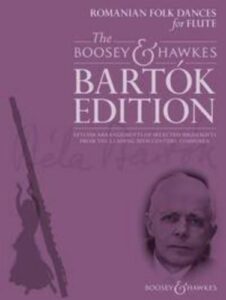Come join us now, and enjoy playing your beloved music and browse through great scores of every level and styles!
Can’t find the songbook you’re looking for? Please, email us at: sheetmusiclibrarypdf@gmail.com We’d like to help you!
Table of Contents
Béla Bartók (sheet music in the #smlpdf)

Best Sheet Music download from our Library.
Please, subscribe to our Library.
If you are already a subscriber, please, check our NEW SCORES’ page every month for new sheet music. THANK YOU!
Bartok For Children 1-43
Bartok – Mikrokosmos 6 books (1 to 6)
Bartok – Mikrokosmos Vol. 2
Bartok – Mikrokosmos Vol. 4
Bartok – Mikrokosmos Vol.1
Bartok – Piano Sonata
Bartok – Sonate For Piano Solo
Bartok For Children Book 1 Based On Hungarian Folk Tunes Piano Solo
Bartok For Children Book 2 after Slovakian Folk Tunes Piano Solo
Bartok Improvisations op. 20
Bartok-Improvisations op20
Bartok.-.6.Danses.populaires.roumaines
Bela Bartok – Music For Strings, Percussion And Celesta Sz. 106 (Piano Transcription)
Bela Bartok An Analysis Of His Music (Book) By Ernö Lendvai
Béla Bartók Romanian Folk Dances Sz. 56 Piano Solo Sheet Music
The Music Of Bela Bartok A Study Of Tonality And Progression In Twentieth Century Music (Elliott Antokoletz) Book

Best Sheet Music download from our Library.
Béla Bartók – The best of Béla Bartók
Track List:
Music for Strings, Percussion and Celesta: 0:00 I. Andante tranquillo 7:30 II.Allegro 15:09 III. Adagio 22:20 IV. Allegro molto
30:02 The Wooden Prince Suite, Op. 13, Sz. 60 42:43 Divertimento for Strings, II. Molto adagio [Sz 113] 52:03 Dance Suite – Finale 56:12 Bluebeard’s Castle, Megérkeztünk – Íme Lássad [BB 62]
Concerto for Orchestra: 1:05:10 I. Introduzione [BB 123] 1:14:50 II. Gioco delle coppie [BB 123] 1:21:26 III. Elegia [BB 123] 1:28:10 IV. Intermezzo interrotto [BB 123] 1:32:42 V. Finale [BB 123] Violin Concerto No. 2: 1:42:16 I. Allegro non troppo [BB 117] 1:57:30 II Andante tranquillo [BB 117] 2:06:28 III. Allegro molto [BB 117]
Concerto for Piano and Orchestra No. 2: 2:18:02 I. Allegro [BB 101] 2:27:47 II. Adagio – Presto – Adagio [BB 101] 2:40:38 III. Allegro molto [BB 101]
Concerto for Piano and Orchestra No. 3: 2:47:03 I. Allegretto [BB 127] 2:54:17 II. Adagio religioso [BB 127] 3:03:54 III. Allegro vivace [BB 127]
3:10:18 Piano Sonata: III. Allegro molto [BB 88] 3:13:59 String Quartet No. 2, I. Moderato [BB 75] 3:24:02 String Quartet No. 6, IV. Mesto [BB 119]
Performers:
Music for Strings, Percussion and Celesta- Budapest Symphony Orchestra/György Lehel The Wooden Prince – Budapest Philharmonic Orchestra/András Kórodi Divertimento Sz. 113, BB 118 – Hungarian State Orchestra/Antal Doráti Dance Suite – Finale – Budapest Philharmonic Orchestra/János Sándor Bluebeard’s Castle – Katalin Kasza (soprano), György Melis (baritone), Hungarian Radio & Television Chorus, Budapest Philharmonic Orchestra/János Ferencsik Concerto for Orchestra Sz. 116, BB 123 – Hungarian State Orchestra/Antal Doráti Violin Concerto No. 2 Sz. 112, BB 117 – Dénes Kovács (violin), Budapest Symphony Orchestra/Ervin Lukács Piano Concerto No. 2 – Zoltán Kocsis (piano), Budapest Symphony Orchestra/György Lehel Piano Concerto No. 3 – Dezsõ Ránki (piano), Hungarian State Orchestra/János Ferencsik Piano Sonata – Erzsébet Tusa String Quartet No. 2 and No. 6 -Tátrai Quartet
Béla Bartók (short bio)
Béla Bartók was born to a musical family in Hungary in 1881. His father was director of an agricultural school, but also a talented amateur musician who played piano and cello and composed short dance pieces. Bartók’s father even founded a music society and an amateur orchestra in his town. Bartók’s mother also played the piano. It is no surprise that Béla quickly became a musician himself! He had great talents for rhythm and memory, and began taking piano lessons on his fifth birthday. Bartók began composing when he was nine years old, writing short dance pieces named after friends and family members.
Bartók’s father died when Béla was only seven years old, leaving the family in a difficult financial situation. Bartók’s mother began teaching piano lessons to support the family, and they had to move from place to place depending on where teaching jobs were available. In 1898, Bartók began his studies at the Budapest Academy of Music. While there, he gained a reputation as a fantastic piano player. He was especially known for extraordinary performances of Liszt’s piano pieces. Everybody at school thought Bartók would be most famous for playing piano and that composing would be more of a hobby.
In 1904, Bartók overheard a young girl singing a Hungarian peasant song. Bartók immediately realized that Hungarian folk songs could provide wonderful material for classical music. In 1905, he contacted Zoltán Kodály, and the two composers began travelling around Hungary collecting and publishing folksongs. Soon, Bartók began travelling around other countries looking for folk music as well. He developed a scientific system for collecting and analyzing folk music from around the world.
In 1940, Bartók moved to the United States to work on a folk collection at Columbia University. In 1942, he became sick with leukemia and died in September of 1945. Bartók is remembered as one of the two great Hungarian composers, along with Franz Liszt. He combined traditional folk melodies and experimental harmonies to create modern, Hungarian music. His scientific classification of folk music is often considered the beginning of ethnomusicology.

Please, subscribe to our Library.
If you are already a subscriber, please, check our NEW SCORES’ page every month for new sheet music. THANK YOU!
